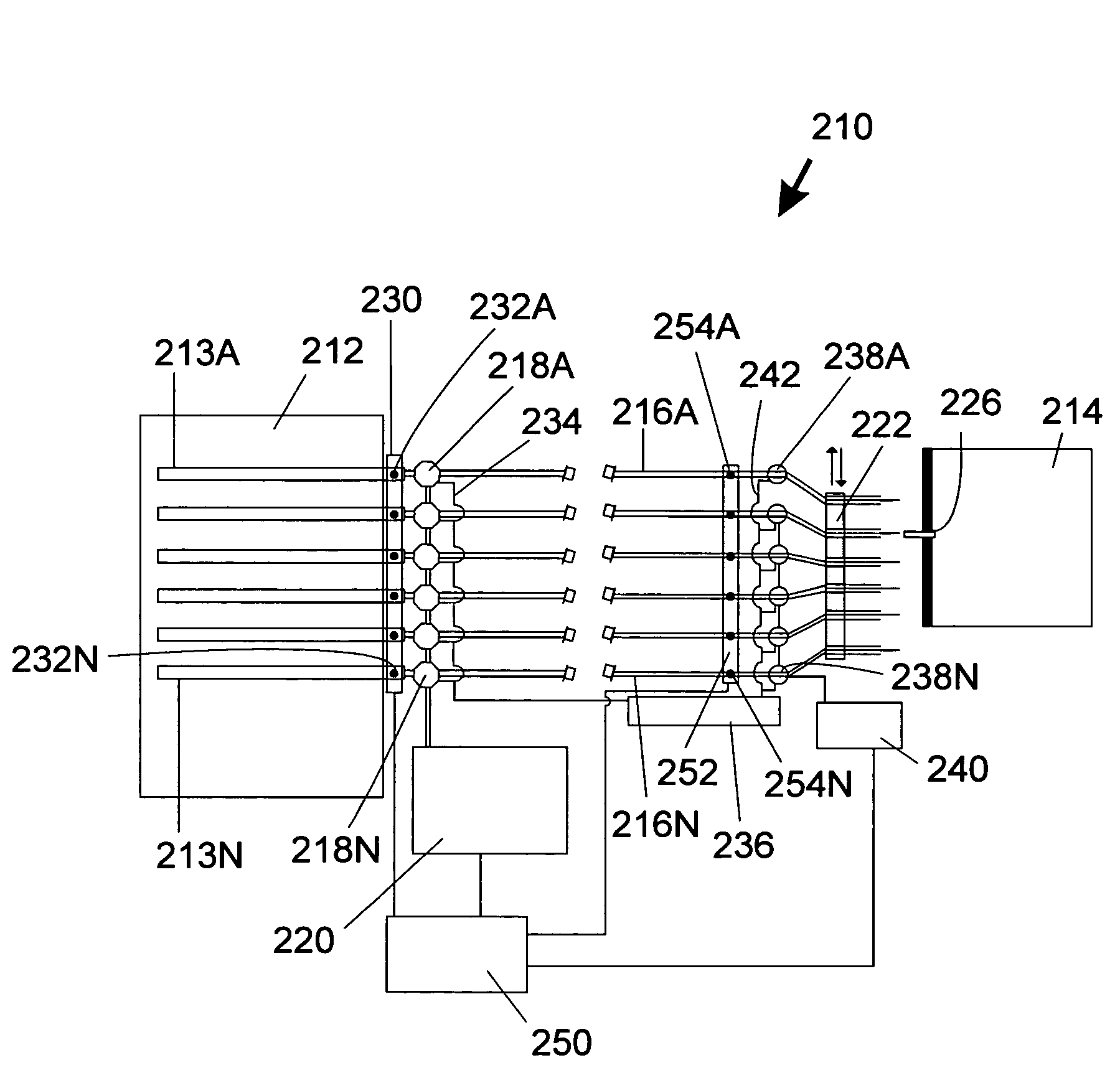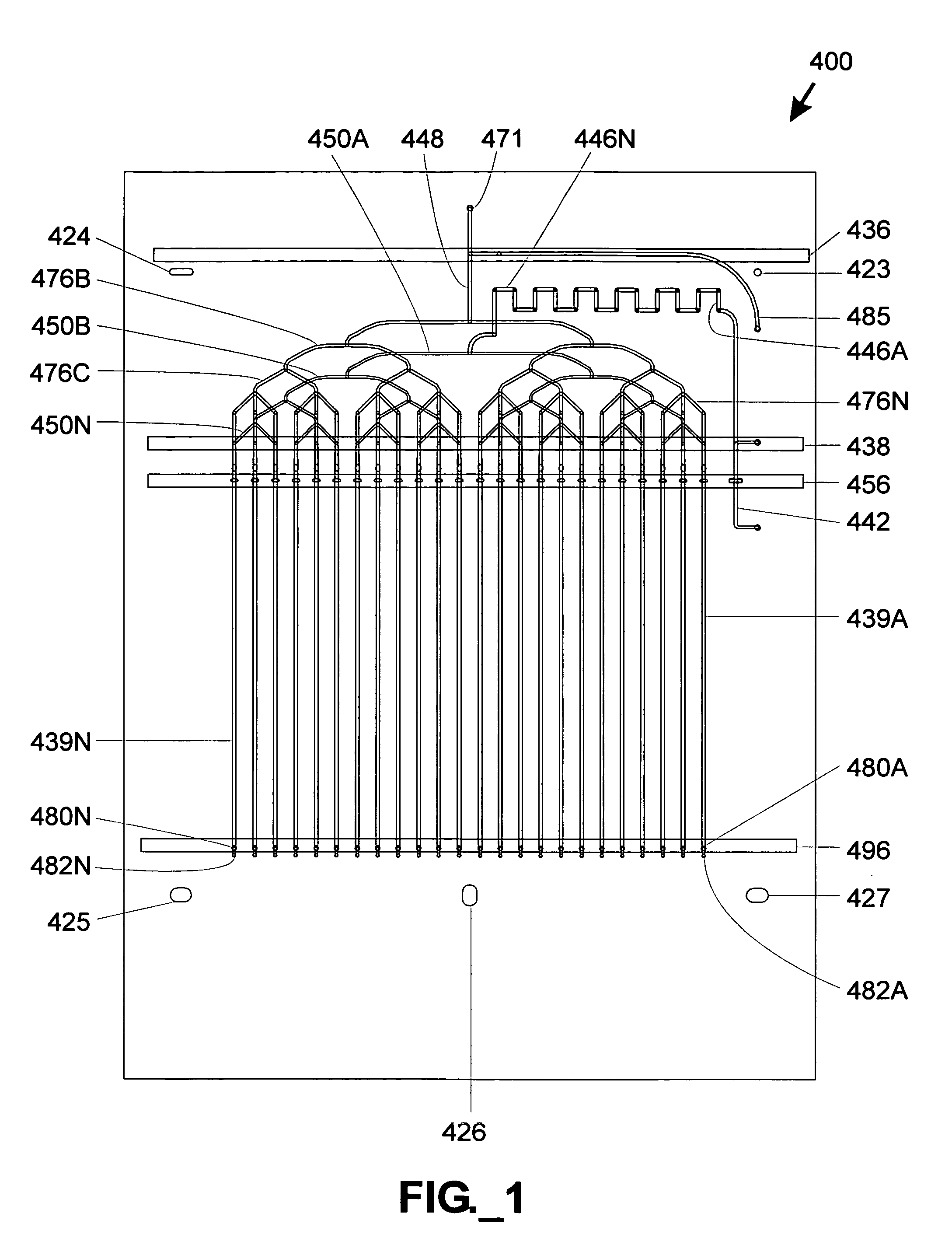Systems and methods for high throughput sample analysis
a sample analysis and high throughput technology, applied in the field of high throughput system for sample analysis, can solve the problems of difficult identification or characterization of individual components using only lc, unstable ions of increasing mass-to-charge ratio, and inability to integrate hplc/ms systems efficiently
- Summary
- Abstract
- Description
- Claims
- Application Information
AI Technical Summary
Problems solved by technology
Method used
Image
Examples
Embodiment Construction
Definitions
[0029]The terms “column” or “separation column” as used herein are used interchangeably and refer to a region of a fluidic device that contains stationary phase material and is adapted to perform a separation process.
[0030]The term “fluidic distribution network” refers to an interconnected, branched group of channels and / or conduits capable of adapted to divide a fluid stream into multiple substreams.
[0031]The term “frit” refers to a liquid-permeable material adapted to retain stationary phase material within a separation column.
[0032]The term “liquid phase separation region” as used herein refers to any region adapted to perform a liquid phase chemical or biochemical analytical process such as chromatographic, electrophoretic, electrochromatographic, immunoaffinity, gel filtration, and / or density gradient separation. A separation column is one type of a liquid phase separation region.
[0033]The term “mass spectrometer” as used herein refers to an analytical component that...
PUM
| Property | Measurement | Unit |
|---|---|---|
| temperature | aaaaa | aaaaa |
| pressure | aaaaa | aaaaa |
| pressure | aaaaa | aaaaa |
Abstract
Description
Claims
Application Information
 Login to View More
Login to View More - R&D
- Intellectual Property
- Life Sciences
- Materials
- Tech Scout
- Unparalleled Data Quality
- Higher Quality Content
- 60% Fewer Hallucinations
Browse by: Latest US Patents, China's latest patents, Technical Efficacy Thesaurus, Application Domain, Technology Topic, Popular Technical Reports.
© 2025 PatSnap. All rights reserved.Legal|Privacy policy|Modern Slavery Act Transparency Statement|Sitemap|About US| Contact US: help@patsnap.com



